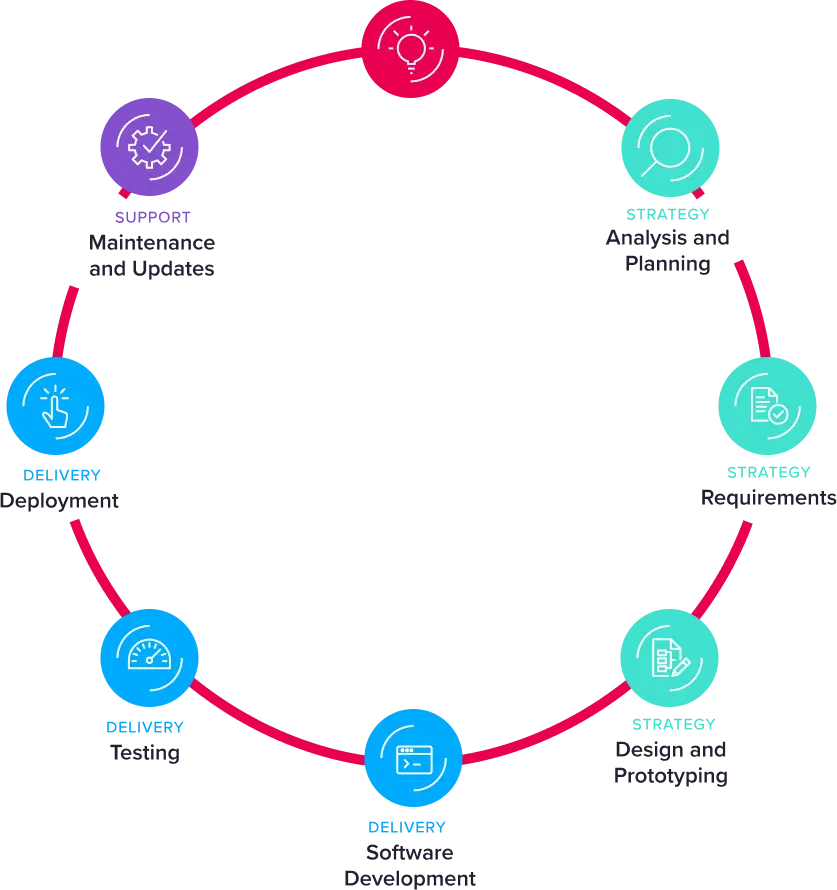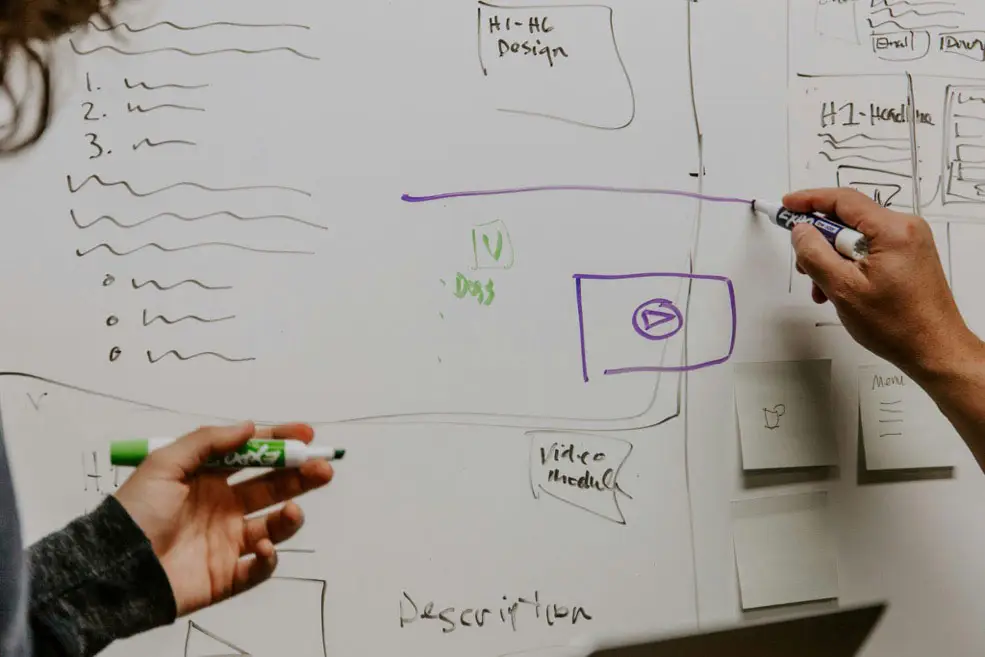A guide to taking an Agile V Waterfall approach to developing custom software
Custom software development is the process of designing, creating, deploying, and maintaining software tailored to meet the specific needs of a particular organisation, user, or set of users.
Unlike off-the-shelf software, which is designed for a broad audience and generic use, custom software is developed to address the unique requirements and workflows of the client. Here are some key aspects of custom software development:
-
Tailored Solutions:
Custom software is designed to fit the exact needs of the user, which can improve efficiency and productivity by catering to specific business processes.
-
Scalability:
Custom software can be scaled and adapted as the business grows and evolves, ensuring that the software continues to meet changing business and customer needs.
-
Integration:
Custom software should be designed to integrate seamlessly with existing systems and software, reducing compatibility issues and streamlining operations.
-
Competitive Advantage:
By implementing software that specifically addresses their unique needs, businesses can gain a competitive edge in their industry.
-
Cost and Time Investment:
Developing custom software can be more expensive and time-consuming compared to purchasing off-the-shelf solutions. However, the long-term benefits often justify the initial investment.
-
Ownership:
Custom software development typically results in the client owning the source code and having full control over the software, including the ability to modify and extend it as needed.
-
Security:
Custom software can be developed with a focus on the specific security needs of the organisation, which can result in a more secure solution compared to generic software.
The process of custom software development generally includes the following stages:
Each stage plays a vital role in ensuring that the final product meets the intended requirements and delivers value to the organisation.

- Analysis and planning
- Requirements
- Design and prototyping
- Software Development
- Testing
- Deployment
- Ongoing Management and Updates
If you are looking to modernise your software, maintain and improve software or simply need to understand what custom software development is, and how it can help your business reach its goals our team of developers are experts in custom software development.
Getting the right development process in place:
Bespoke software development is a complex process that requires clarity of thinking, process and as legendary developer Kent Beck points out - great habits.
“I am not a good programmer just a programmer with good habits.”
Kent Beck
Project management should support good habits; including consistency, quality of work, and open communication between the stakeholders. Ultimately, regardless of which methodology you follow, it is these good habits that ultimately impact the success of a project.
To dig into project management methodologies - the two most prominent methodologies in custom software project management are Agile and Waterfall. Each has its own unique approach, advantages, and challenges, making them suitable for different types of custom software projects and team dynamics. This blog post will provide a comparison of Agile and Waterfall methodologies, exploring their principles, processes, pros, and cons, to help you determine which might be the best fit for your next project.
Understanding the Agile V Waterfall Approach:

Agile:
Agile Methodology
Agile is an iterative and incremental approach to software development that emphasises flexibility, collaboration, and customer satisfaction. The Agile Manifesto, published in 2001, outlines its core values and principles, promoting adaptive planning, evolutionary development, and early delivery.
Key Principles of Agile:
-
Customer Collaboration:
Engage customers throughout the development process to ensure the final product meets their needs.
-
Iterative Development:
Break the project into small, manageable units called iterations or sprints, typically lasting 1-4 weeks.
-
Flexibility:
Adapt to changing requirements, even late in the development process.
-
Team Collaboration:
Foster close cooperation among cross-functional team members.
-
Continuous Improvement:
Regularly reflect on processes and practices to identify and implement improvements.
The Agile Process:
-
Plan and Design:
Plan high-level goals and create a product backlog, prioritising features based on customer value. Design high-level architecture and detailed design for features.
-
Development:
Design, code, and test features iteratively during each sprint.
-
Test:
Demonstrate completed features to stakeholders at the end of each work stage for feedback.
-
Deploy:
Release the incremented software to a production environment or customer.
-
Review:
Reflect on the process, identify areas for improvement, and implement changes in the next stage of updates.
Waterfall:
Waterfall Methodology
Waterfall is a linear and sequential approach to software development, characterised by distinct phases that follow one another in a fixed order. This methodology was first introduced in the 1970s and has been widely used in various industries for its structured and disciplined approach. A formal "change request" process tends to be created that needs to be followed to change the scope.
Key Principles of Waterfall:
-
Sequential Phases:
Development progresses through a series of phases: Requirements, Design, Implementation, Testing, Deployment, and Maintenance.
-
Comprehensive Documentation:
Detailed documentation is created at each phase to ensure clarity and completeness.
-
Fixed Scope:
The project scope and requirements are defined upfront and remain relatively unchanged throughout the development process.
-
Control and Predictability:
Emphasises strict control over the project timeline, budget, and deliverables.
The Waterfall Process:
-
Requirements:
Gather and document detailed requirements from stakeholders.
-
Design:
Create system architecture and detailed design specifications.
-
Implementation:
Develop the software according to the design documents.
-
Testing:
Conduct thorough testing to identify and fix defects.
-
Deployment:
Deploy the software to the production environment.
-
Maintenance:
Provide ongoing support and updates as needed.
Agile vs. Waterfall: Breaking down the Pros and Cons
Agile Pros:
|
Agile Cons:
|
Waterfall Pros:
|
Waterfall Cons:
|
Choosing Between Agile and Waterfall
Deciding between Agile and Waterfall depends on various factors, including the nature of the project, team dynamics, customer involvement, and organisational culture. Here are some considerations to help you make an informed decision:
When to Choose Agile: |
When to Choose Waterfall: |
Dynamic Requirements:Agile is suitable for projects with evolving requirements and where customer needs are expected to change. |
Clear and Stable Requirements:Waterfall is ideal for projects with well-defined and stable requirements that are unlikely to change. |
Early Value Delivery:If early delivery of functional components is important, Agile's iterative approach is beneficial. |
Regulated Industries:In industries with strict regulatory requirements and the need for comprehensive documentation, Waterfall's structured approach is advantageous. |
High Collaboration:Agile works well with cross-functional teams that thrive on collaboration and communication. |
Predictable Outcomes:If predictability in timelines, budget, and deliverables is critical, Waterfall provides a more controlled environment. |
Innovation and Flexibility:Projects that require innovation and flexibility to experiment and adapt to feedback are well-suited for Agile. |
Simple Projects:For small, simple projects with clear objectives and limited scope, Waterfall's straightforward process can be more efficient. |
Parting thoughts from our Operational Director Chris Kirkham
Both Agile and Waterfall methodologies offer unique advantages and challenges, and the choice between them depends on the specific needs and context of your project. Agile provides flexibility, customer collaboration, and early delivery, making it suitable for dynamic and complex projects. On the other hand, Waterfall offers structure, predictability, and comprehensive documentation, making it ideal for projects with stable requirements and strict regulatory demands.
Ultimately, understanding the principles, processes, pros, and cons of each methodology will help you make an informed decision and choose the approach that aligns best with your project goals and organisational culture. Whether you opt for Agile, Waterfall, or a hybrid approach, the key to custom software development success lies in careful planning, effective communication, and continuous improvement throughout the development process.
Considering developing or updating custom software?
Get in touch with our team to find out how we can help develop the right custom software solution for your business needs.


Your partners in possibilities
As experts across existing and new technologies, we don’t simply solve software problems, we find solutions that help manage change so that your business thrives and grows.
We’re eager to hear about your project goals and turn them into reality. Get a free consultation to make tech possible.
Brief us




